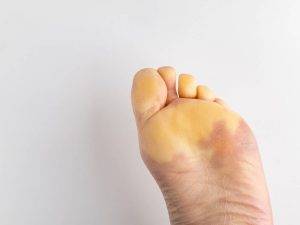Have you ever had cold feet before? And have you wondered why it’s always your feet that are stone cold? Cold feet may be from exposure to low temperature, but it can also indicate certain medical conditions that require treatment.
This article will bring you all you need to know on cold feet.
Common Causes
Diabetes
Diabetes is a medical condition that our body cannot probably regulate blood glucose, either because the pancreas does not produce enough insulin, or the body does not respond to the effect of insulin. Insulin is the main hormone that regulates blood glucose levels. Long-term diabetes can bring two major complications that give you cold feet:
Diabetic neuropathy: chronic high blood sugar levels can injure nerves throughout the body. It most often damages the nerves in our peripheries, such as our legs and feet. Usually, those nerves give us sensation and control movement. Once damaged, your feet might be cold, and you might feel a burning sensation.
Peripheral artery disease: high blood sugar level also causes blood vessel occlusion due to blood clots, especially the peripheral arterials with smaller diameters compared to our central arteries. The blood clot within those small arteries delays proper blood flow to our feet, which results in less heat delivered to the feet, thus the symptoms of cold feet. Smoking, high blood cholesterol, and high blood pressure can also result in peripheral artery disease.
Raynaud phenomenon
Raynaud phenomenon is a condition in which the fingers and toes turn different colours (white, blue, and red), due to the sudden constriction of distal small arteries in response to certain triggers such as cold or stress. The transient lack of blood flow to your hands and feet makes them feel cold and causes the colour change. It can also happen spontaneously without any known trigger and usually subsides within an hour.

Hypothyroidism
The thyroid hormone is one of the key hormones for our daily metabolism. It is involved in the regulation of our weight, energy levels, internal temperature, skin, hair, nail growth, and overall chemical metabolism of our body. Hypothyroidism is a condition in which our body fails to produce enough thyroid hormone. It directly results in reduced circulation and overall body temperature, thus causing the symptoms of cold feet.
Other symptoms of hypothyroidism include hair loss, weight gain, muscle pain, fatigue, cold intolerance, and hoarse voice. Common causes of hypothyroidism are iodine deficiency, autoimmune conditions, and previous surgery.
Anaemia
Anaemia is a medical condition that our body does not have enough healthy red blood cells to carry oxygen to supply our body tissue. Similar to peripheral artery disease, the reduced circulation to peripheries directly causes the symptoms of cold feet. Other signs of anaemia include fatigue, pale skin, irregular heartbeats, chest pain, and light-headedness.
Diagnosis
If you frequently experience cold feet without exposing your feet to a cold environment, it’s time to take it seriously and seek medical attention. A blood test can check whether you have diabetes, anaemia, or there is any problem with your thyroid. Your doctors will also measure your ankle and arm blood pressure to calculate an ankle-brachial index (ABI), which aids in the diagnosis of peripheral artery disease. Imaging studies can also be carried out if there’s a strong suspicion of peripheral artery occlusion.
Management
Once the exact cause of cold feet is identified, treatment should target that cause and your cold feet will get better as treatment progresses. To manage the symptoms, here are some tips you can try at home:
- Wearing warm socks, and/or compression stockings
- Daily hot bath
- Exercise regularly
- Stop smoking
- Leg elevation when you lie down

